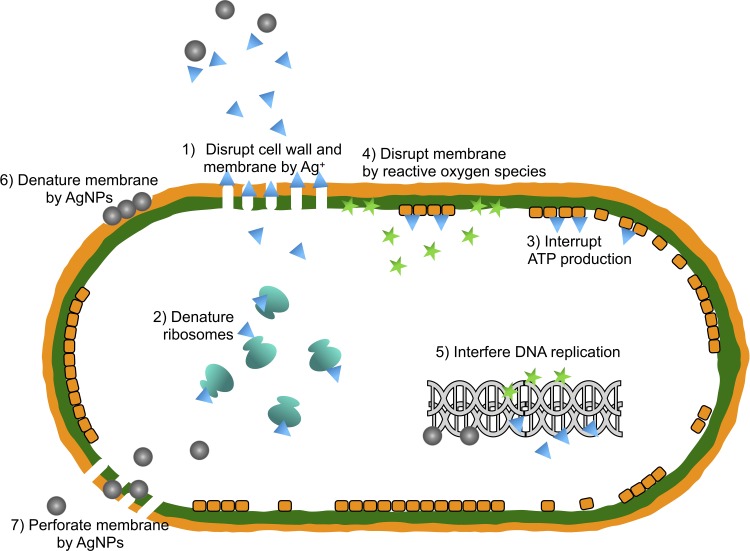Figure 1.
The antibacterial actions of silver nanoparticles (AgNPs). 1) Disruption of cell wall and cytoplasmic membrane: silver ions (Ag+) released by silver nanoparticles adhere to or pass through cell wall and cytoplasmic membrane. 2) Denaturation of ribosomes: silver ions denature ribosomes and inhibit protein synthesis. 3) Interruption of adenosine triphosphate (ATP) production: ATP production is terminated because silver ions deactivate respiratory enzyme on cytoplasmic membrane. 4) Membrane disruption by reactive oxygen species: reactive oxygen species produced by the broken electron transport chain can cause membrane disruption. 5) Interference of deoxyribonucleic acid (DNA) replication: silver and reactive oxygen species bind to deoxyribonucleic acid and prevent its replication and cell multiplication. 6) Denaturation of membrane: silver nanoparticles accumulate in the pits of cell wall and cause membrane denaturation. 7) Perforation of membrane: silver nanoparticles directly move across cytoplasmic membrane, which can release organelles from cell.

